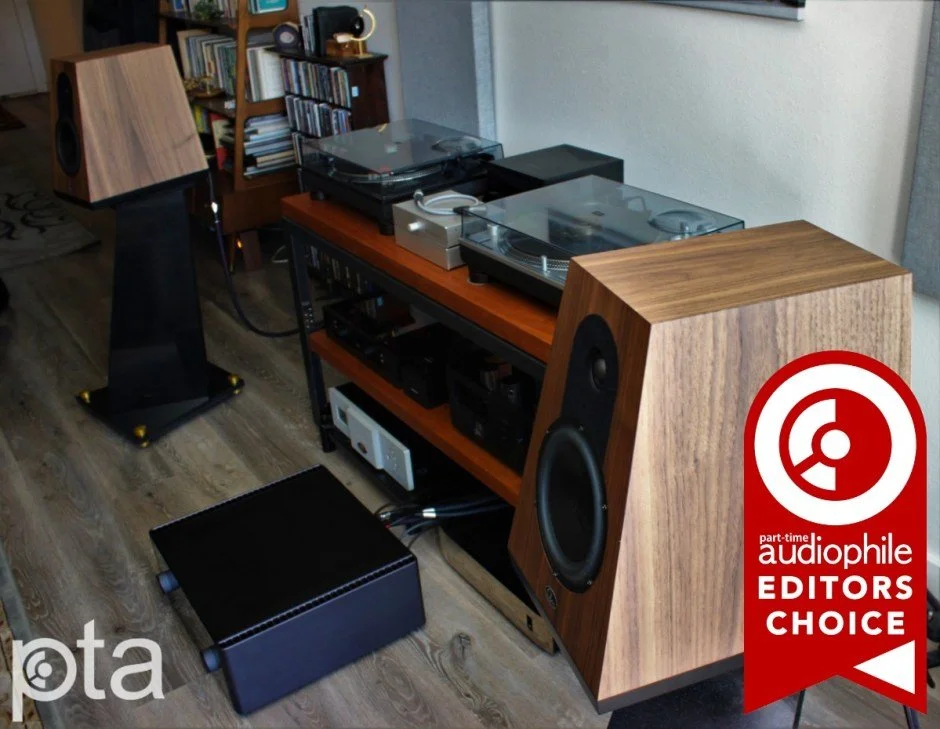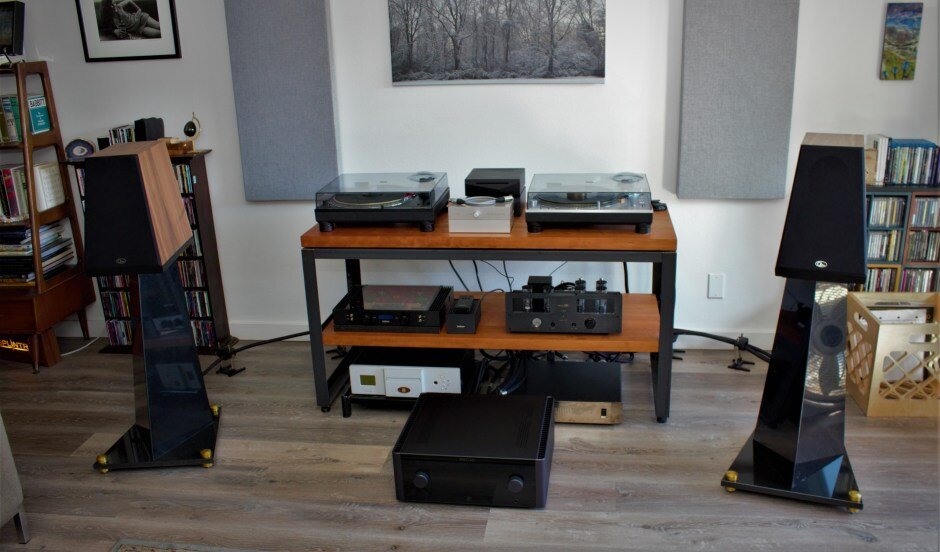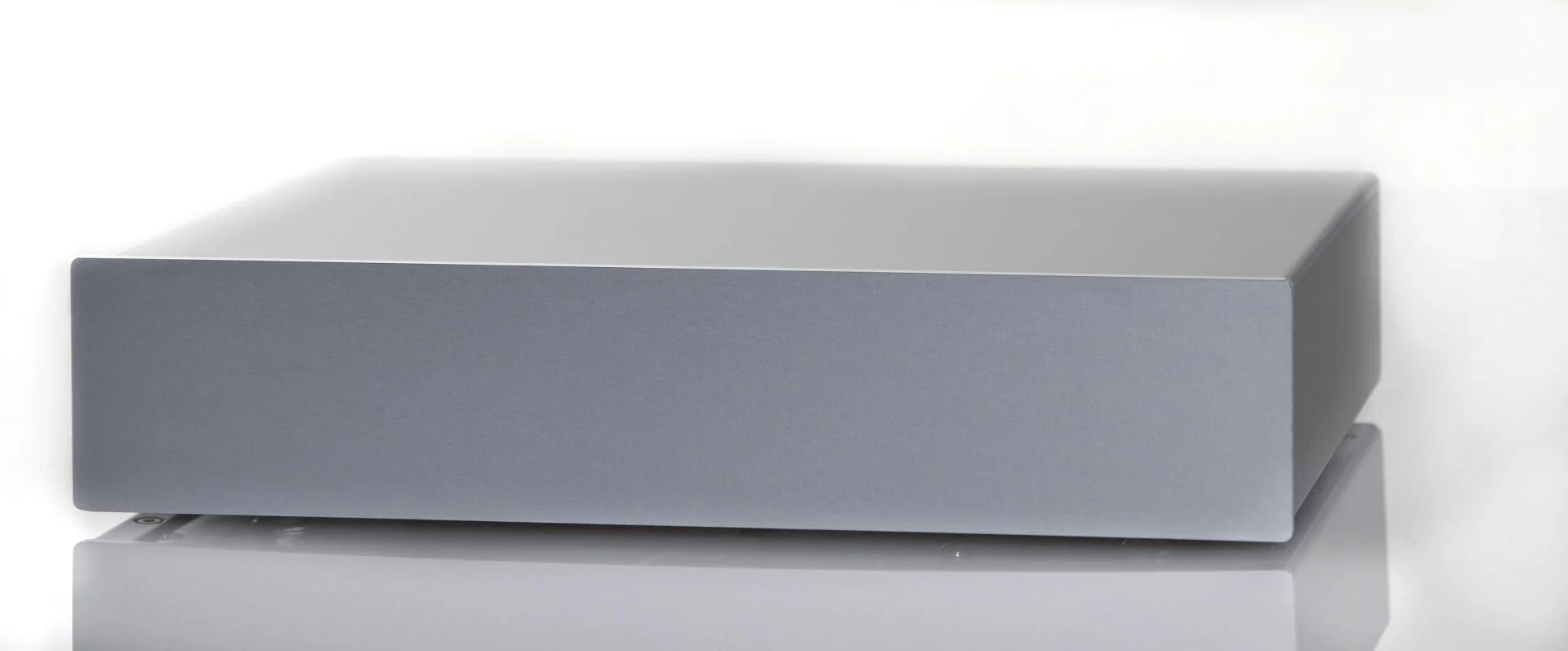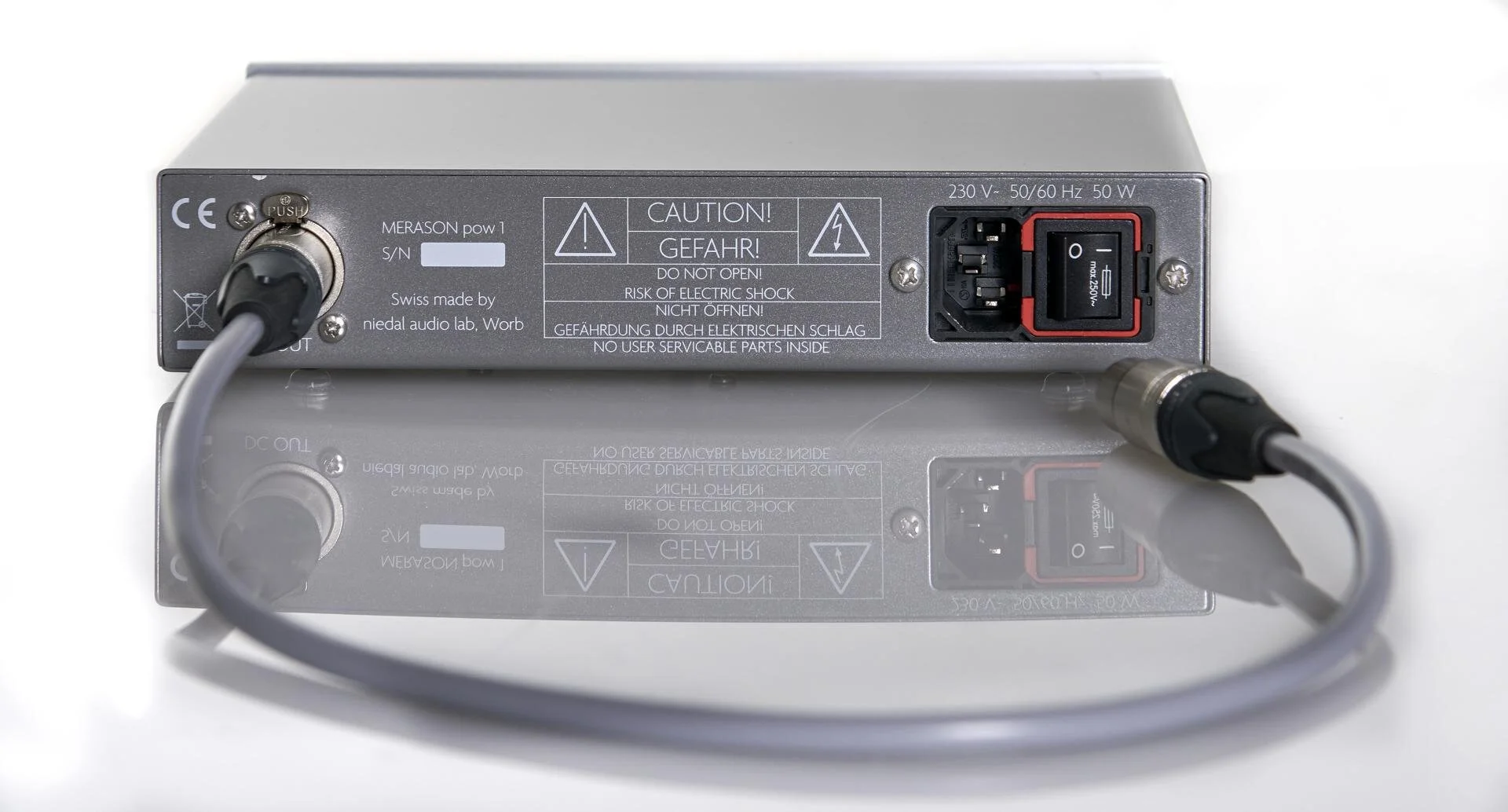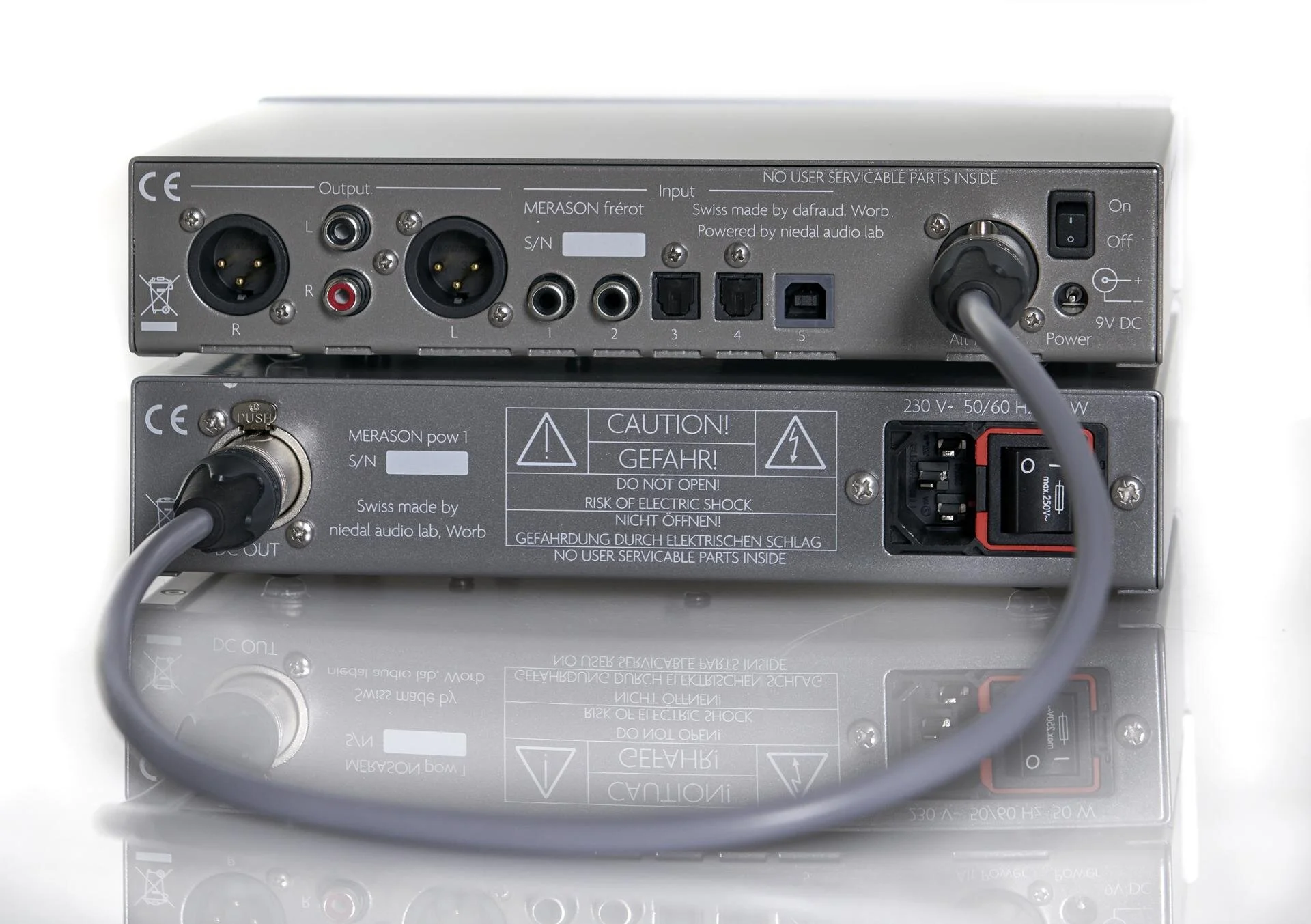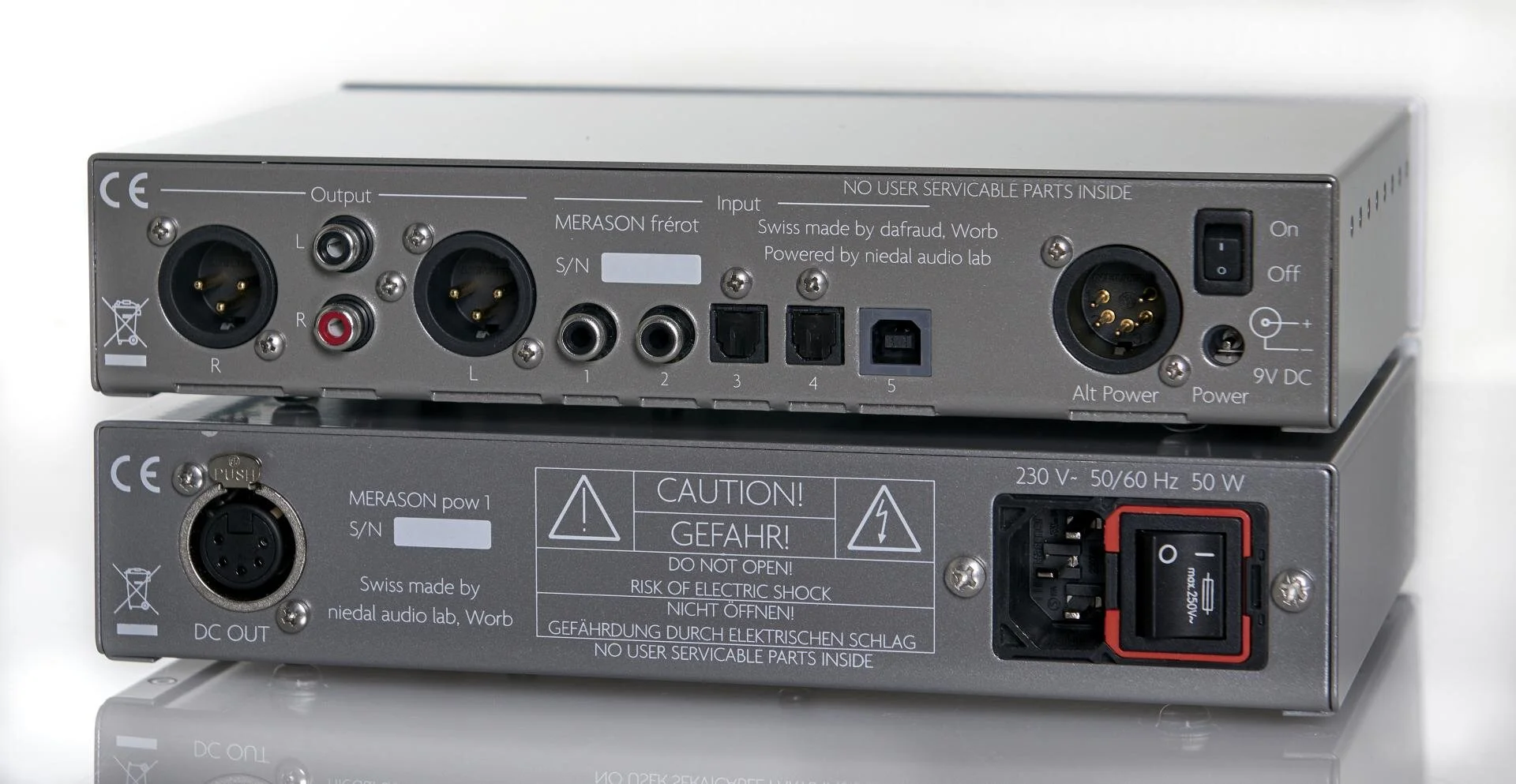At last, the new Qln Prestige One monitors have arrived.
The last time I heard a pair of Qln speakers was probably at an audio show close to a couple of years ago, undoubtedly matched with a Vinnie Rossi L2i-SE integrated amplifier. I leaned over to Mark Sossa of Well Pleased Audio Vida, who is also the Sales Manager of Qln, and I asked him, “So…what’s the secret? They sprinkling some sort of fairy dust in these?”
“Nope,” Mark replied with a chuckle. “Just the best parts and engineering.”
If you’re a regular reader of Part-Time Audiophile, you probably already know all about Qln loudspeakers from Sweden, and how these beautiful and surprisingly petite designs can fill a decent-sized room with big, big sound and lovely, fulsome bass. You’re probably strapping yourself in for another love-fest, another premium two-way bookshelf design that has wowed us—or, to be more specific, me, the guy who falls in love with a different monitor every few weeks.
I’ve explained that there’s a good reason for this, and it has nothing do with anything pragmatic or even suspicious. In my early days of reviewing, my editors and publishers would send stuff to me. Here, review this pair of RCA interconnects, about 1200 words. When that’s the methodology for your review schedule, stuff marching in and out of the listening room, you’re not going to give too many raves unless you get lucky. It’s a mixed bag, working on that assembly line.
I don’t do it that way any more, nor do any of the writers here. We pursue the products that we tend to find interesting. Ones we’ve already scouted. That methodology tends to filter out the merely competent or adequate. When a box arrives on our front porches, we get excited because we’re looking forward to spending time with whatever it is.
And so it is with the Qln Prestige One. Every time I heard the magnificent little QLN Prestige Three towers hooked up to a Vinnie Rossi L2-iSE integrated at a hi-fi show, I had my mind absolutely blown. Every time I’ve heard these, I’ve been very clear with Mark Sossa.
I want to review these. PLEASE.
The Long Journey of the Qln Prestige One
As we all know, Dave McNair wound up reviewing the Qln Prestige Three—it had something to do with him immediately wanting to buy a pair as his personal reference the second he heard them. Mark Sossa told me at the time that a larger Qln was on the horizon, the Prestige Five, and I would get a chance to review those instead. Okay, Dave, review those Threes. Then, before I knew it, Dave had the Prestige Fives in his system and I was like WTAF?
I heard from both Mark and Dave almost immediately. Dave had been enjoying the Fives almost in secret because he didn’t want me to get angry. What happened? Dave was able to hear the Prestige Fives at a dealer, one of the first pairs in the US, and he immediately traded up. So I couldn’t be mad at Dave. He fell in love. The heart wants what the heart wants.
Mark Sossa, on the other hand, called me to tell me that the new Qln Prestige One two-way bookshelf speakers were coming soon, and that he knew I would totally be into that. I was, of course, amenable to this plan. Then the news became just a little better—Qln was releasing a new version of their Signature monitor, which was an even more ambitious design. I’d get that after I finished with the Qln Prestige Ones.
I was happy again and Dave was let off with a warning–even after he was able to spend time with the Qln Prestige Ones first. “You’re gonna love these,” he told me. “Please don’t buy these ones too before I get a chance to review them,” I replied.
The Qln Prestige One loudspeakers did arrive. I connected them to the Rotel MICHI X5 integrated amplifier, and I cued up Hilary Hahn’s Paris. My first reaction, of course, was that the wait was worth it, and every glorious thing I loved about Qln in the past was now here, in my listening room, at my disposal. Yes, I’ve found another extraordinary bookshelf monitor to love and cherish.
What a disaster! I’ve fallen in love again, and I can’t get up! My career will be ruined!
Inside the Qln Prestige One
When I first set up the Qln Prestige One, I was a little confused as to what I had plucked from the box. I posted a photo on social media and someone in Germany immediately congratulated me for getting a pair of the Signatures in for review. Wait, these are the Signatures? I thought these were the Prestige Ones—yep, it even says so on the back.
I checked out the Qln website and the photo of the Qln Prestige One was of the older version, with a cabinet that was all right angles. The photo of the Signature, however, looked just like the pair of Prestige Ones I had in front of me. Basically, the Prestige Ones look like the older Signatures, and we don’t know what the new Signatures look like, but we will soon. Hope that clears things up for you—it did for me.
As Mark Sossa explained, no fairy dust was used in the making of the Qln Prestige One monitors, just excellent parts and, of course engineering. In this case, we’re talking about Mats Anderson, Qln designer. He’s one of those speaker designers who stresses the need to voice speakers so they sound more natural, and he does this mostly through resonance control and time coherence. “Many things are hidden in the measurements that are very important to how we hear things,” he told me.
Qln’s history is intertwined with this model. The first Qln 1 speaker goes back to 1979, when it was considered a bit of a Swedish LS3/5a, but with a time-aligned design in a truncated pyramid enclosure. Over the years it became more sophisticated, and this new Qln Prestige One was, indeed, inspired by the design of the last generation of the Signature.
This Qln Prestige One is a study in paying close attention to every small detail, particularly in the crossover design, as Mats explains:
“We use the same constant impedance crossover technology but we have put a lot of time to optimize performance and cost. We have increased dynamics and even SPL by using lower loss coils to the woofer. All coils are air core and all capacitors are of polypropylene type.
“All coils are baked, so the wires are glued together to reduce internal vibration. The constant impedance crossover technology have even impedance responses that improve easy load for amplifier specially tube amps and give better phase coherence for the driver. Crossover is hard wired for best contact between components and we try to get as few contact points as possible. Every component is glued with soft glue to reduce vibrations and increased damping.”
Internal copper wiring was designed by Qln, interestingly enough, and all cable parts are baked. Polypropylene is used extensively throughout for insulation and vibration control. Here’s an example of the level of care used in this design—the polypropylene must be without color, as the color used has a “negative effect” on the performance.
Mats Anderson described the current drivers for this new Qln Prestige One thusly:
“The bass/midrange and treble drivers have been specifically selected and custom developed by industry renowned Danish driver manufacturer ScanSpeak and offer the latest in 21st century advanced driver technology. The unique coated Kevlar bass/midrange driver with its built-in copper ring in the magnet system offers symmetric drive and higher dynamics in the midrange concurrently suppressing intermodulation distortion and resulting in industry leading high-end voice handling and astonishing micro/macro dynamics from a compact 2-way speaker design.
“Likewise the unique Illuminator tweeter offers superb vocal rendition and excellent imaging at all listening positions. Its large roll surround and textile dome diaphragm provides a flat frequency response above 30 KHz with outstanding off-axis dispersion. The unique AirCirc magnet system and its rear chamber reduce reflections and resonances.”
Qln Prestige One Sound
I think I can describe the Qln sound easily, because it is so distinctive. Most of us sit while we listen, and we tend to “watch” the soundstage in front of us. We can see the music, like it’s being presented on a screen behind the wall between the speakers, and if we’re lucky it’s in 3-D.
The first time I walked into a Vinnie Rossi/Qln room that screen was gone, replaced by a top-notch VR set-up attached to my noggin. I felt like I had walked outside until I came to the edge of a beautiful meadow, and I was just standing there a looking at everything happening in front of me, and I could smell the pine trees and feel the breeze on my face. It’s almost like active listening vs. passive listening. Stuff is happening right in front of you, and you can feel all of the movement.
That sounds a little fancy-schmancy, so I’ll tell you my simple impression of the Qln Prestige One sound—it was warm, it was open, it was holographic, and it sounded incredibly natural in every way.
With the Qln Prestige Threes, at hi-fi shows at least, you’ll immediately notice how deep the bass is, and how unlikely it is that such a svelte little tower can reach that low. The Prestige One is equally impressive in that respect, perhaps not in an absolute manner, but in a way that’s still uncanny to the coordination of the ear and the eye. We are talking about slightly less on the bottom, in a very general sort of way, but in my room I felt that the Qlns coupled so well to my room that I couldn’t help but think that I had the perfect-sized speaker in the perfect-sized room.
Listening
The Qln Prestige One monitors were an important participant in the Yulunga Tests I administered for the Luminous Audio Arion Mk. 2 phono stage and the Sonus faber Lumina II monitors. I won’t go into much more depth here, other than to explain that the Yulunga Test is what I call that first deep soft bass drum strike on “Yulunga,” the opening track of Dead Can Dance’s Into the Labyrinth.
In short, the Qln Prestige One monitors delivered that epic drum sound with an almost perfect balance of texture and depth. That drum beat energized my listening room in a relaxed, open way that was particularly notable for its clarity. I have a feeling this will be the benchmark of the Yulunga Test that other two-way bookshelves—or any speakers, really—will have to meet.
The most illuminating listening session of all came toward the end of the review period, while I was comparing such extraordinary phono preamplifiers as the Brinkmann Edison Mk. II and the Luminous Audio Technology Arion Mk. II. I pulled out one of my secret, occasionally forgotten reference LPs, Shelly Manne’s Sounds Unheard Of. I say forgotten because I tend to forget about it, and just how awesome it sounds.
This is the Analogue Productions remaster from years ago, part of the more affordable Revival Series line that seemed to be packaged with a bit less prestige than Chad Kassem’s mind-blowing 2-LP 45rpm sets that I enjoy so much. Nevertheless, this recording is a clinic on imaging, with Manne playing dozens and dozens of exotic percussion instruments located all over the stage, and guitarist Jack Marshall providing the melodies.
This LP always sounds great, and on a wide variety of hi-fi systems, but I’ll always remember how it sounded on the Qln Prestige One monitors because it was the first time I thought about the recording itself, and whether Shelley Manne is really running around the stage playing all these instruments or is this all mixing board wizardry. Of course it’s the latter, although I would love to hear Manne running around the stage in bare feet trying to keep the beat. The point is, I never even thought about it before, but I did with the Qln’s because I was hearing such a balanced whole. Every sound in this amazing album felt just a little closer to me than ever before.
Conclusion
The Qln Prestige One monitors were one of the most endearing and talented two-way monitors I’ve heard. If you’ve heard the larger Prestige Threes playing at an audio show and you’ve fallen under their spell, you’ll be thrilled to know that much of that magic is present in the Prestige One—so much, in fact, that I might choose the smaller speaker and save a bit of money and not feel like I’m missing out on anything other than a few stingy Hz at the bottom.
As much as I enjoyed their company over the last couple of months, I found myself persuaded even more when I considered the MSRP—just $6800/pair. I’m not sure I’d compare them to other speakers I’ve reviewed in their price range, since I feel like they’re perfect fine hanging out with some of those five-figure monitors I’ve recommended in the last few years. But if I was in a dealer’s showroom and I was listening to these speakers, I’d put them into serious consideration. After I was told the price, the checkbook would pop out almost automatically.
Once again, I’m faced with the idea of a great monitor becoming even greater. After I reviewed the Stenheim Alumine 2 loudspeakers, I was informed of an SE version that improved the overall performance. After I reviewed the Vimberg Amea, I was left to wonder how much the $10,000 diamond tweeter version would enhance the performance of a speaker that may be the finest two-way monitor I’ve heard. So this time, I’m going to keep bugging Mark Sossa until those Qln Signature monitors are finally released. I want to know how this can get any better, with or without fairy dust.
Meanwhile, the Qln Prestige Ones not only get a Reviewer’s Choice Award, but I’m sure we’ll be discussing this amazing monitor again at the end of the year.

